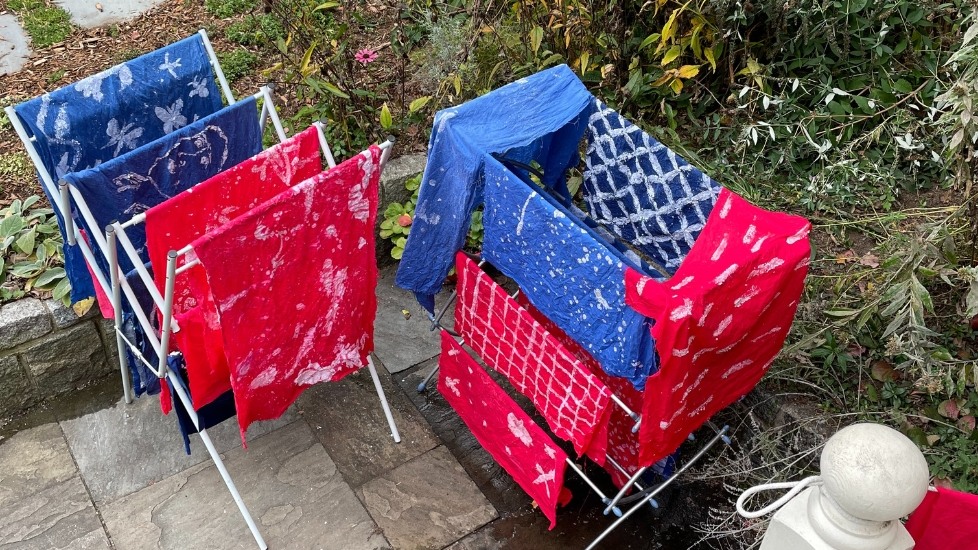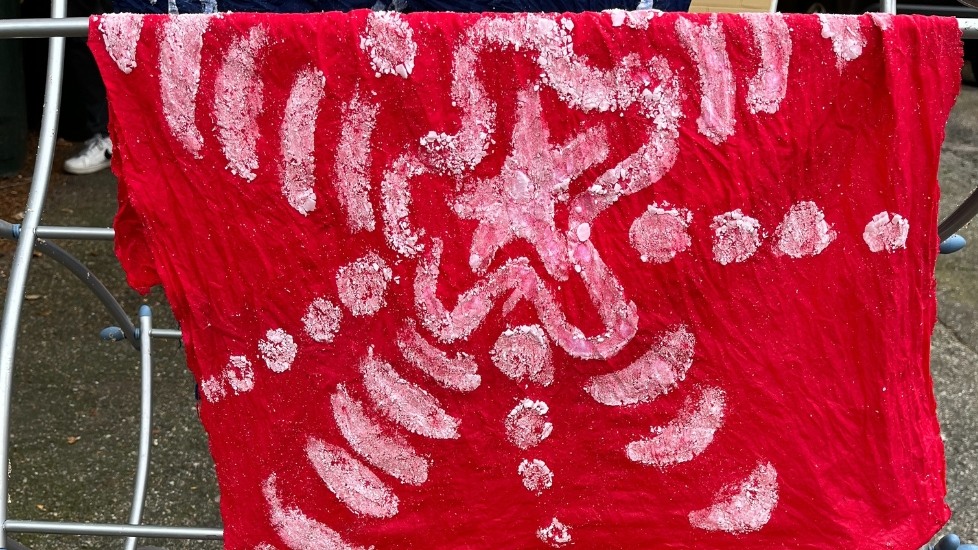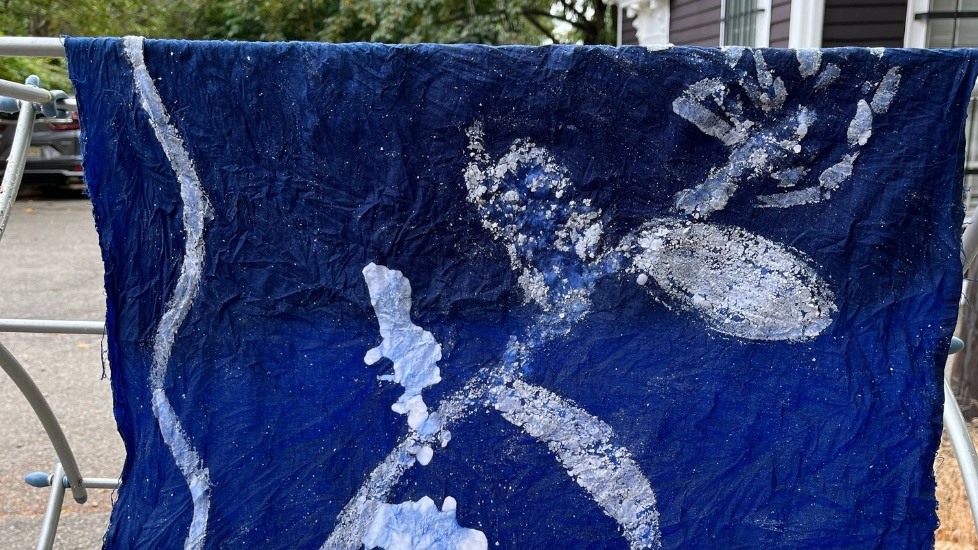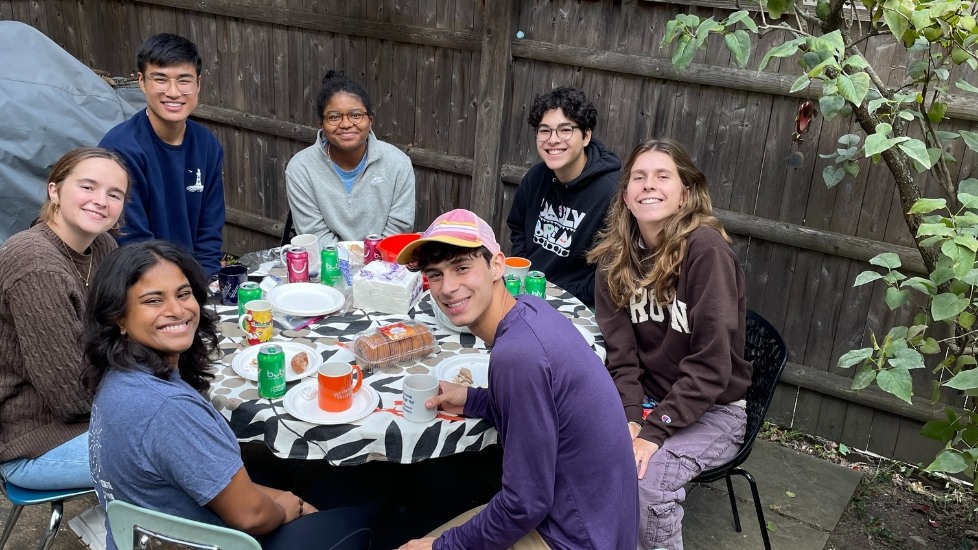On Wednesday, October 18, students in Professor Seth Rockman's first-year seminar "A Textile History of Atlantic Slavery” undertook an experiential research project with wax-resist fabric dyeing. Their goal was not to reenact a specific historical crafting practice, but to investigate hands-on material culture methodologies for historians to better understand the past.
James Ma '27, an international student from Hong Kong, decided to take the course based on its relation to two of his academic interests. "I was educated in the UK where slavery wasn't part of the curriculum." James told the department. "There were so many first-year seminars to choose from when I got to Brown, but this course combined my interest in textiles and the ability to learn something new in terms of history."
Each student was issued a take-home kit containing white fabric, candles, paint brushes, matches, and toothpicks, along with information about the long history of wax-resist dyeing techniques stretching from southeast Asian batik to West African adire eleko. Students melted the wax and applied it to the fabric outside of class time — some choosing intricate wax designs while other pieces appeared abstract. When the class reconvened at an outdoor location on Wednesday, October 18, students submerged their fabrics in a sequence of dye vats to produce bright and color-fast blues and reds. Although the dyes were natural rather than synthetic, students were spared the overpowering smells traditionally associated with real indigo.
“I am eager for students to put today's dyeing experience into dialogue with the way they traditionally engage the past through written texts,” explained Professor Rockman. “Getting our hands dirty doesn’t allow us to inhabit the bodies of people who lived long ago, but it will ideally give us new questions to ask about the experiences of the people we study.” Rockman is enthusiastic about making as a historical methodology, and appreciative of his students’ willingness to try something new as they learn about the past.






